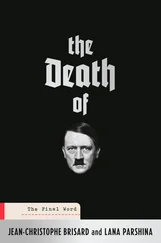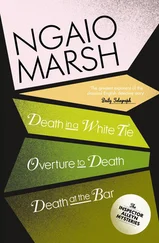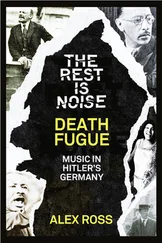resistance, which was not coined until after the war, encompasses numerous groups that acted separately and often held differing views. Although some of these groups eventually joined forces, for the most part they labored in isolation. Many organizations worked in such secrecy that to this day they are rarely mentioned in historical studies. The Solf Circle, which formed to assist the persecuted, is one such case, and others include the Stürmer group and the revolutionary left- and right-wing militants from the Weimar era who were brought together by former Freikorps leader “Beppo” Römer. We have some idea of the size of this last group only because nearly 150 members were tried before the so-called People’s Court in 1942 and 1943. In it’s early days the German resistance was dominated by left-wing groups such as Beginning Anew, the Socialist Front, the Saefkow group, and the International Socialist Fighting League. Most important of all was the group led by the young Luftwaffe lieutenant Harro Schulze-Boysen, which joined with Arvid and Mildred Harnack and their friends in the early 1940s to form what become known as the Red Orchestra, a name given to it by the Gestapo. 4
Of all the various resistance groups, however, only three were able to forge closer ties over the years and develop a strategy that posed a genuine threat to the regime. These were the conservative circle around Carl Goerdeler, a former mayor of Leipzig, and Ludwig Beck, who had resigned as army chief of staff; the Kreisau Circle, which was led by Count Helmuth von Moltke and dominated by a Christian and socialist philosophy; and finally the regime’s opponents within the military. Around these groups moved a number of isolated individuals, including lawyers, former trade union leaders, businessmen, church officials, and state bureaucrats. Many developed resistance cells in their own offices, often with the tacit support of their superiors, such as Military Intelligence chief Admiral Wilhelm Canaris and Ernst von Weizäcker, the secretary of state in the Foreign Office. For a time, the Military Intelligence group actually played a leading role within the opposition.
It was this branch of the resistance whose motives were the clearest and whose efforts came closest to succeeding. And it was this branch that ultimately found expression in one symbolic act, for that is what the events of July 20, 1944, represented and how they were understood by most of the participants. The long road to this day, the internal tensions and setbacks, as well as the manifest futility of the effort are the subjects of this book.
Some might object that this is precisely the part of the resistance that has already drawn the lion’s share of attention, to the neglect of other opposition efforts. It is all the more surprising, therefore, that of the literally hundreds of books that have been published on this topic not one both relates the fascinating story of the plotters and attempts to analyze it. Christian Müller’s study of Stauffenberg, Peter Hoffmann’s groundbreaking works, and those of Klaus-Jürgen Müller, Helmut Krausnick, Hans Mommsen, and many others have made important contributions to our knowledge of the German resistance. All these works, however, are aimed at the limited number of experts in the field.
The present volume is intended for a broader audience with a general interest in history. Its purpose is not so much to convey new information as to recount an old story in the light of the latest research. It deals with folly and miscalculation, conflict and failure, human frailty and the ability to persevere in the face of adversity. The story is full of political and human drama that tends to be overlooked in strictly scholarly studies. What is new, here, above all, is the context in which this extraordinary drama was played out.
The lack of a comprehensive view, which is so integral to these events, has eroded the legacy of the German resistance. That legacy lies not in the political views of the opposition but rather in the insights that the plot to assassinate Hitler-like all momentous historical occurrences-offers us into the thoughts and actions of people operating under the most extreme circumstances. The fact that the subjects of this book failed in the end, after many attempts, does not in any way detract from their memory or from the example that they set.
1. THE RESISTANCE THAT NEVER WAS
Essential to the history of the German resistance is the sense of powerlessness that defined it from the outset. How Adolf Hitler managed in a single stroke and seemingly effortlessly to seize power and construct an unconstrained totalitarian system is a question that has been raised frequently since the end of his twelve-year rule. But this question was also on the minds of Germans who lived through that period. Contrary to what most of the Nazis’ defeated foes later claimed, it was not primarily by means of ruthless violence that Hitler rose to power, although terror and intimidation were certainly always present. Enabling factors far more complex were grasped relatively early on by astute observers of the Weimar Republic on the left as well as the right, who spoke not so much about how Hitler had overwhelmed the republic but about how the republic had caved in. The self-induced paralysis and shortsightedness of the democratic forces clearly played as great a role in the debacle as Hitler’s tactical and psychological skills or his ability to seize the historical moment.
First of all, Hitler did not emerge out of nowhere to claim power. Rather, he worked away patiently in the background for years, overcoming many obstacles and awaiting the day when he could tout himself as Germany’s “savior” from a parliamentary system entangled in countless intractable problems. The political parties of the Weimar Republic had long been set in their ways, embroiled in ideological disputes, and they were concerned much more with securing advantage for their members than with meeting the needs of the country. Years before, they had forfeited responsibility for forming governments and passing legislation to the president, who governed by emergency decree. It was precisely Hitler’s promise of a return to parliamentary rule that induced Hindenburg, after long hesitation, to ask the Nazi leader to form a cabinet. Thus, on the morning of January 30, 1933, Hitler became chancellor of a new coalition government with the conservative German National People’s Party.
No one could explain at the time how it had come to this. Hitler himself spoke of a “miracle” and interpreted his appointment as an “act of God.” 1Barely three months earlier he had suffered his first serious setback at the polls, losing over two million votes. Just two months earlier he had narrowly succeeded in holding his splintering party together with a dramatic appeal concluding in threats of suicide. Scarcely four days earlier, President Hindenburg had assured the army commander in chief, General Kurt von Hammerstein-Equord, that “he would not even consider making that Austrian corporal the minister of defense or the chancellor.” The extraordinary reversal was brought about by ambition, a thirst for revenge, and what one contemporary observer saw as a “mixture of corruption, backstairs intrigue, and patronage.” 2
As if foreshadowing what was to come, Hitler’s adversaries permitted him to outmaneuver them on the very day he was appointed. As evening fell on January 30 a few lingering parliamentarians sat together in the Reichstag. Still confused by the events of that morning, they had lost themselves in a lengthy discussion of the likely consequences when, from the darkness of the neighboring Tiergarten, movement and noise became perceptible, as if a great procession were under way. Outside, people streamed past the Reichstag in groups of varying sizes, heading toward the Brandenburg Gate. “Young people, all young people,” remarked Social Democratic Party (SPD) deputy Wilhelm Hoegner of Bavaria as they passed on their way to a torch-light parade whose flickering lights illuminated not only the broad expanses around the Brandenburg Gate but also Unter den Linden and Wilhelmstrasse, casting a red glow on the skies above. Thousands of uniformed, hastily gathered marchers swept through the streets, while crowds of onlookers stood and watched. “But we just slipped away into the darkness,” Hoegner later wrote, “crushed and wearied by the ferment of those days.” 3
Читать дальше
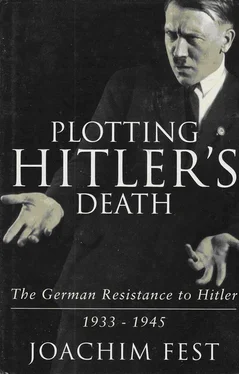

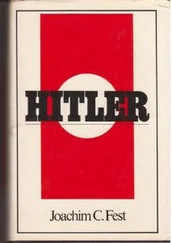
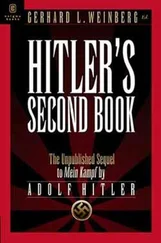
![Traudl Junge - Hitler's Last Secretary - A Firsthand Account of Life with Hitler [aka Until the Final Hour]](/books/416681/traudl-junge-hitler-s-last-secretary-a-firsthand-thumb.webp)
